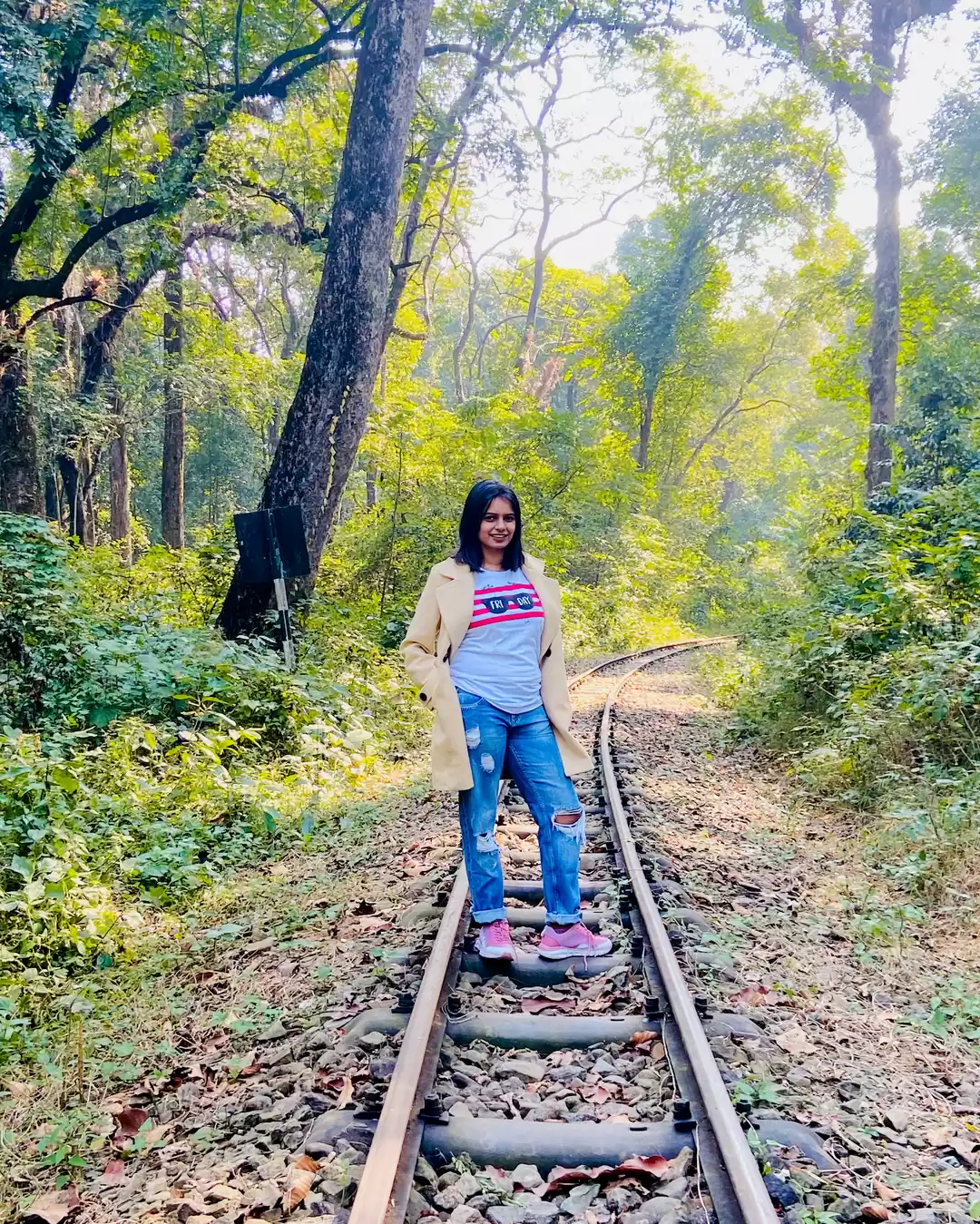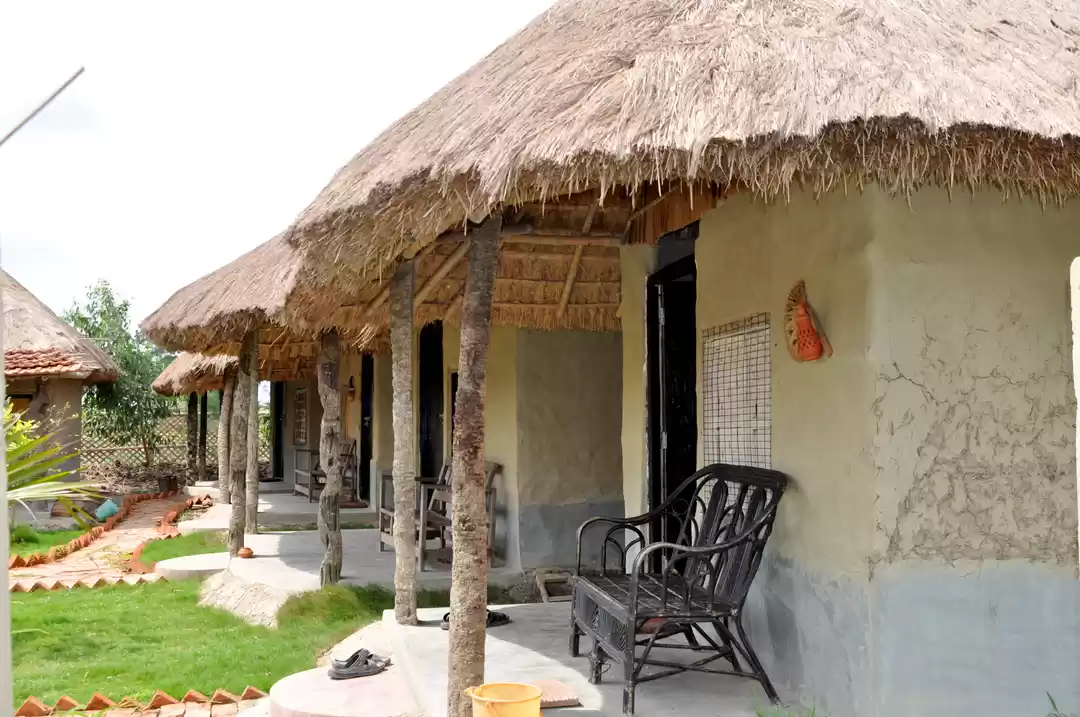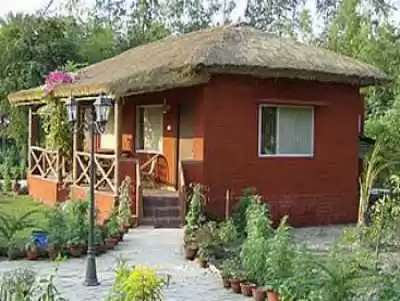Almost for twenty years I have heard about this mystical place which is around 109 kms from Calcutta but life eluded me that opportunity until the April of 2015.
A long weekend presented itself ahead and we planned to utilize it to the fullest. Scanned the brochures, picked up maps and bundled ourselves into our most trusted four wheeler, the Swift and headed out into a south easterly direction towards Godkhali. In case, you are driving yourself; there are two ways you can reach Sunderbans - via Canning and the other one through Basanti.
Luckily, the approach road to the Basanti highway starts quite near to where we stay so we took that route. The narrow highway which snakes its way through the green country side of Bengal provides good cross section of flora that is so typical of Bengal - coconut trees hissing in the wind, dense undergrowth and acres of green paddy fields. As you drive, you can see an intricate network of canals running parallel to the road. You have to be seriously careful while driving as big buses that ply in this route suddenly come in your way. The landscape around is quite flat, slightly humid with abundance of water bodies. In fact the entire place can give you a fair bit of a glimpse of what Sunderbans can be about 50 kms from here. It will only be water and brooks around fragmented landmasses.
The ideal time of a visit should be between November to end February to utilize the winter and prevent the sultry weather of the summer months which make you sweat like a ruptured water pipe.
After coasting, for over three hours, amidst series of coconut trees that dot the horizon, we came to a wide expanse of a piece of land where the road ends and the car travel stops. We reached Godkhlai.
Parked the car with a local parking attendant who promised to look after her for two days and we set off.

Our House boat shot in the night with a powerful torchlight. You can see the dense forest on the horizon under a moon light night
Took our travel gear and boarded the 48 feet long, about 15 feet wide diesel powered motor launch made of wood, over a metal structure. The boat was quite neat and very functional - a lower deck which can allow four people to sleep in moderate comfort. The engine sits at the stern of the boat with a kitchen right in front of the engine room. Two bathrooms, one on the lower deck and the other on the upper deck at the back.
The super structure had a railing-ed balcony with a short staircase up front. The mid section had a tarpaulin covering on top which had plastic tables and chairs laid across, firmly held on the deck with ropes. The small opening was primarily used for lunch or breakfast while on board, the thought of having one and seeing this forested beauty passing by thrilled me and we jumped on to the boat.
Ready to travel the beautiful and dangerous..
By the time we boarded her, the sun had tilted towards west and we were hungry like devils, The house boat slowly chugged on the river and moored mid-stream for lunch. We had a sumptuous Bengali lunch with Betki fish, and prawns 'malai curry' and having fish on a boat in a river getting swayed by the afternoon breeze was a feast by itself. The boat took turns after turns as the river followed the thick forest on either side of the bank.

The guide who accompanied us was telling us many stories about Sunderbans and by no time, the discussion centered round the Bengal tiger and the salt water crocodiles.
We saw something quite peculiar, when the boat was passing the forested banks ...knots of red cloth tied on branches of trees..what are those? Well, we learned that those are the spots, indicated by villagers where someone from the village has been attacked and devoured by the tiger, and quite recently. Even today, three to four humans are attacked and eaten by the famous royal Bengal tigers.
The victims are poor fishermen disobeying government orders not to venture on your own, row their boats in the deeper parts of the jungle in search of food and loose their lives in the process.

As the boat moved on and the stories heard, the day was coming to an end...our tourist stop was a place called, 'Pakhiralaya' which means the abode of the birds. It is like a big stream that comes and meets the main river system, and rows of 'Sundari' and other trees have grown over the banks without an inch of space to spare..very dense indeed ; no wonder a tiger is camouflaged so well, and victims hardly have any chance at all. The sun had vanished and probably millions of birds were returning home, and the cacophony of their calls was like a continuous concert of a Bird Philharmonic orchestra.

The night descended on Sunderbans, and some sort of a gut numbing fear of unknown - a mix of the exposure to the wild animals, the bleak horizon, all were washing over us but an intense sense of joy filled us..all that we had with us, was a camera, few luggage and this house boat which was like a lifeline.

On the western end, the sun bids good bye and the forest edge gets darker as we float mid stream, unaware of the perils that lurk under the hull of the house boat
Suddenly, the night changed and every one hour till about 8 pm you see various shades of sun, moon and sky as if painted by the virgin forest of incredible proportions.

We returned to our cottage for the night. The darkness was complete..in some places, even the electricity has not reached, or the authorities could not find a suitable land to erect the poles to stretch the wires. So, all we had was a torch, which played dancing images on the trees around and almost it felt like something moved without a sound.

After dinner, we dared to do some photo shoots along the river with some forest guards armed with a bamboo pole. They say that the big cats stealthily comes and whisks its unsuspecting victims. We carry on...

We retire home and the day's excitement, and the menacing night puts us into a deep slumber.

Next morning, refreshed after a good night sleep, we board the house boat and explore the deeper and core area of this mighty mangrove forest.

At high tide, the trees and the entire land mass remain inundated.. well the tigers won't be on the prowl but the salt water crocodiles have a field day under the submerged branches

For miles around us, all we saw was placid river water and dense forest of mangrove and 'golpata' trees
We were on our way to Sajnekhali and without an expert behind the wheel of the house boat, we would have been lost in these narrow waterways. The driver took us through innumerable creeks and in one such creek, not more than 20 feet away, we saw the dreaded crocodile...completely still as if dead, can burst into action and catch any fleshy animal that comes near it, including us.

The house boat berthed near the Sajnekhali land mass and we took a breather from the continuous images of water and forest. Few deer could be seen grazing the ground around and they are always near humans, the reason - they feel safe from the lurking predators.

We saw few villagers catching fish for a living. For them the struggle of life and death are a way of life. Every day can be their last day and still they continue their professional pursuit with grace.

After lunch, we set off to a place called 'Jharkhali' which took the diesel powered house boat to cover in about 3 hours battling the huge waves of the Matla river.
Our house boat following another one along its wake, we closed in on the bank hoping against hope to see any form of wild life from the comfort of the slowly moving vessel
The house boat was being tossed by the river at 45 degrees on its keel as there was strong wind coming in from the south over the Bay of Bengal. We held our breath and prayed for the land mass to appear.
A big surprise awaited for us at Jharkhali. The government authorities have set up a recuperation unit to nurse injured animals. Guess what we saw there. We were lucky to see a full bodied male royal Bengal Tiger in captivity which was caught and was being treated of wounds he got when hundreds of villagers chased it and tried to kill; however, got rescued by the wild life officials. This tiger is known to have attacked, killed and eaten about twelve humans, which included four women, two children and adult males.
I guess, it is our mistake that we are foraying into the tiger territory and trying to change the nature rules.
Even through the thick metal bars, and the wire mesh, when we looked at the roaming tiger, the hair rose at the nape of our neck. What a graceful killing machine, built for the kill.

We planned to head back and boarded the house boat which was waiting for the fierce sea winds to subside. As we settled on the balcony holding the boat, the joyous feeling of touching the wild life of the Sunderbans at such close quarter filled our heart and mind.

The sun came down once again trying to touch the far away horizon as the house boat increased her throttle, hugged the muddy banks of Sunderbans and we returned to our base camp.
We remember Sunderbans with awe and deep respect and would love to re-visit this inimitable wilderness that lingers on for years.
This blog was originally published on 'The Voyager'







































